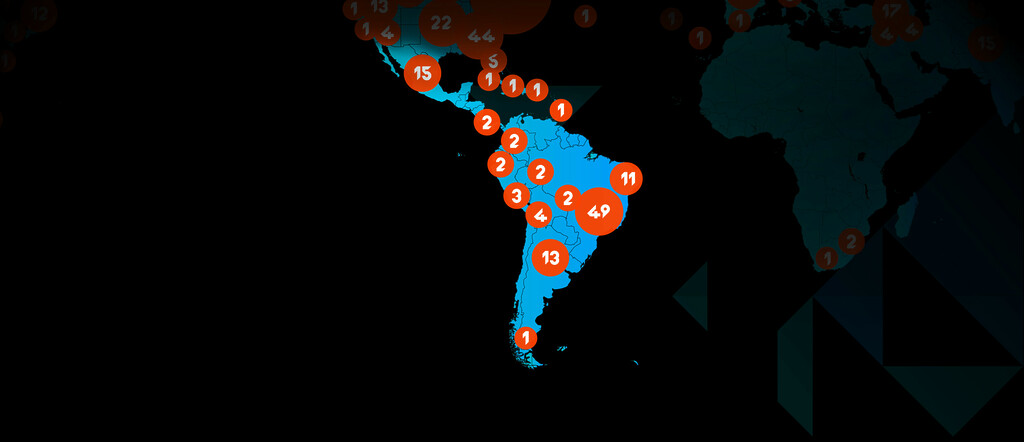
March Madness – When Brackets Blow Our Minds and Streaming Saves the Day
It’s not so important who starts the game but who finishes it.
John Wooden, UCLA Basketball Coach, who led his teams to 10 NCAA Tournament championships in the ‘60s and ‘70s
NCAA Tournament – Made to Stream
Thanks to the march of technology and the investments made throughout the online video ecosystem by content providers, commercial CDNs and ISPs, the odds of getting a high quality stream from your favorite game to your favorite device are actually quite good and getting better every year.
You can stream every game this year with NCAA March Madness Live (http://www.ncaa.com/march-madness-live). Device coverage includes apps for iOS, Android, Windows 10, Amazon Fire TV, Apple TV and Roku. The app is free and offers a great place to keep up with scores, stats and bracket progress. The app does request you to authenticate with your TV Provider to access the live stream. However, you can also stream through bundled offerings from SlingTV and Playstation Vue. Finally, Chromecast was updated to include March Madness support this year.
So, in short, there are myriad options to stream the 2016 tournament. That also means there is really no excuse to miss a game.
Qwilt – March Madness Streaming Ranks High in US Networks
We are already seeing NCAA live streaming rank among the top video sources in our US network operator and US university deployments. As you can see below, on Friday, March 18th, with first round tournament play started, the NCAA live stream site ranks as high as second overall, below only Netflix in one deployment.
Cache Efficiency, which refers to the percentage of streams which, due to their popularity, will be stored on and served from the open cache, will continue to increase as tournament play continues and the increasing audience is concentrated on a smaller number of teams and games. Shown in the table below at 47% and 67% respectively, we expect cache efficiency to increase further by the end of the tournament.
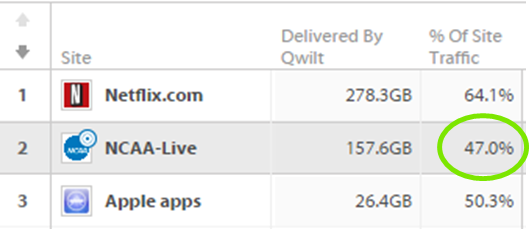
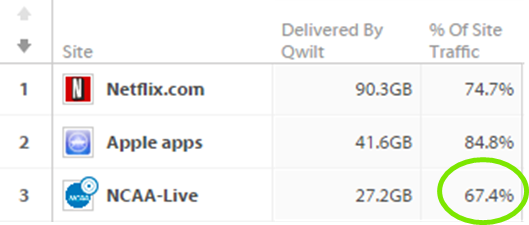
Streaming Quality of Experience – Made Better by Open Caching
As shown in the two charts below, the average streamed bit rate for March Madness live streams improves when delivered by the Qwilt Open Cache deployed in the ISP or University network. The Open Cache is closer to the viewer and its proximity results in content – in this case a live stream – moving to the edge of the network, close to the consumer. The proximity means the network path between origin and client device is shorter and, therefore, the chance of encountering network congestion – from peering, transit or exchange points for example – along the path is lower.
Furthermore, the Open Cache delivers improved live streams while, at the same time, improving the average bit rate of other video services as well. This data confirms the ability of the Open Cache to act as an intelligent network optimization device deep inside the ISP network. The Open Cache, physically located in each neighborhood or market, acts autonomously to detect popular traffic, whether VoD, Live Streams or Software Updates and then responds accordingly to cache the content and deliver it from cache the next time it is requested from a downstream consumer. The Open Cache does not have to be programmed to be on the alert for the next source of peak traffic. It will sense the trends and conditions in network traffic and respond by allocating resources to continue optimizing network traffic. The Open Cache is a fundamental component of a new network architecture that offloads traffic to a local cache and thereby pushes popular content to the edge of the network where it is delivered at far less cost and at much higher quality.
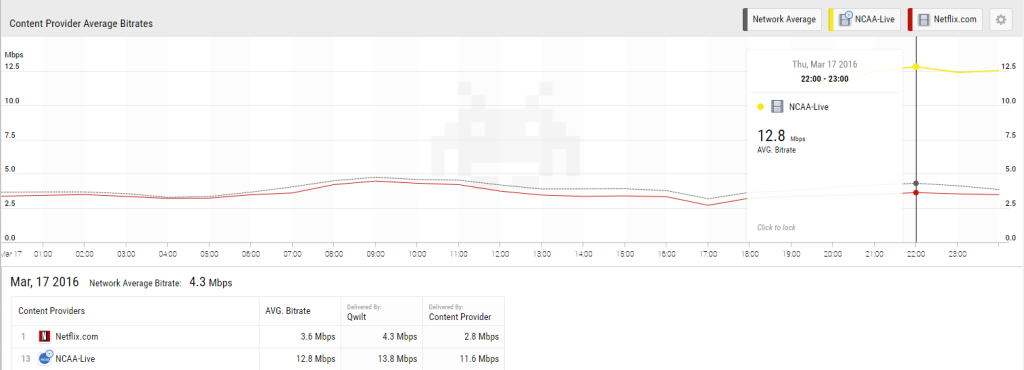
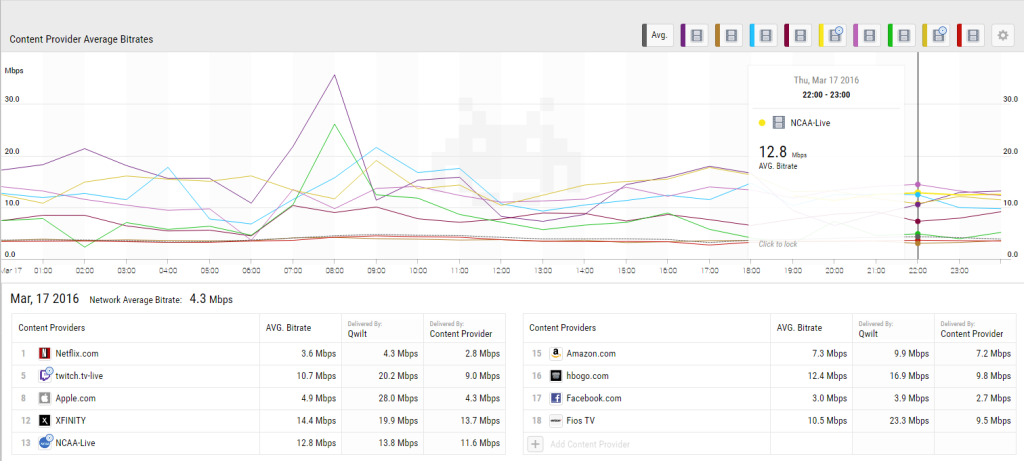
Managing the Peak – Open Cache Normalizes Traffic during Extreme Events
Events like March Madness illustrate the challenge of managing network capacity for peak events. These events, such as the World Cup, Olympics, World Series and Super Bowl will continue to create extreme peaks of traffic that can’t be managed in traditional ways. The cost of building a network just to handle peak events has already become unaffordable given the magnitude and frequency of the high peaks observed. Moreover, the network planner can’t ignore the peak events and hope for the best as each of those events have the potential to bring the network to its knees and they are coming more frequently and with greater intensity.
In these circumstances the Open Cache acts as an intelligent buffer, normalizing peak network traffic from a wide variety of event such as:
– Live Streaming Events: March Madness, Olympics, World Cup, World Series, Super Bowl
– Popular VoD Events: Season Finale of Game of Thrones, House of Cards, etc.
– Regular Software Updates: iOS, Windows
How Qwilt’s Open Cache Solves the Live Streaming Problem for Network Operators
Qwilt’s open cache, deployed in over 100 networks worldwide and many of the major ISPs in the US, has been optimized to handle all the sources of March Madness streams including CBS, TNT, TBS and TruTV. This optimization ensures Qwilt’s Open Cache is operating at its maximum efficiency for every live stream session it handles.
Traditional live streaming protocols use unicast transmission, an inefficient and bandwidth intensive approach that requires a dedicated HTTP session for every subscriber. In contrast, Qwilt’s Live Stream Cache quickly and efficiently identifies trending and popular live OTT video streams, enabling the Qwilt Open Cache to instantly direct those streams into the controller’s FastCache, a dedicated control and storage path optimized for low latency delivery of live streams. The Qwilt Live Stream Cache then establishes a local live video transmission point in each neighborhood that can serve a very large population of nearby subscribers using a single seed stream, offloading significant strain on operator network infrastructures.
As John Wooden says, “it’s not so important who starts the game but who finishes it”. It’s clear live streaming knows how to finish well and we’re proud to be helping network operators join the streaming revolution.
Ready to take the next step?
We have a team of content delivery experts ready to answer your questions.
Related resources

Press Release
Qwilt showcases Open Edge Cloud for Content Delivery achievements at NAB Show 2024

Blog
Amazon’s “Diamond” points to Open Caching for live sports streaming

Press Release
Turkcell partners with Qwilt and Cisco to boost content delivery from the network edge, enhancing digital streaming experiences across Türkiye

News

